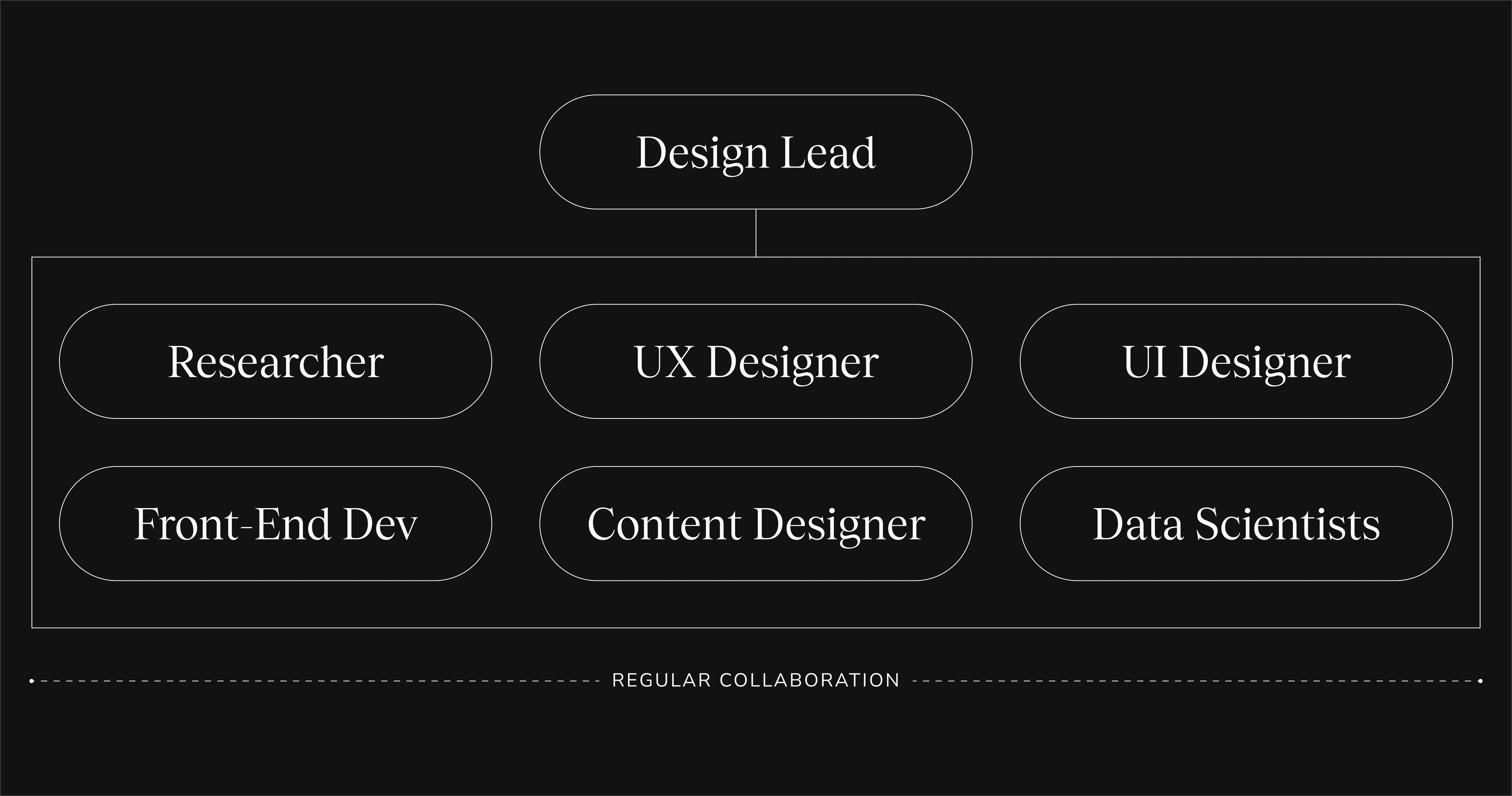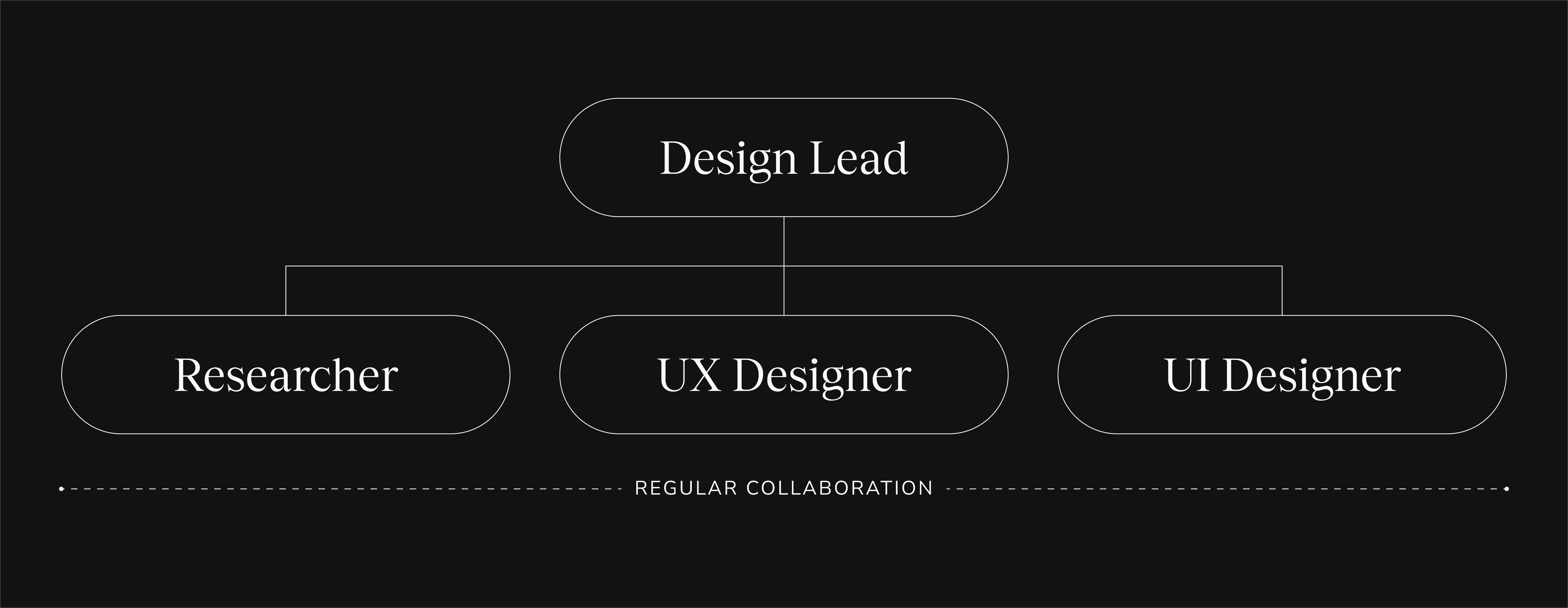Article written by Kate Valind
5 min read
The Design Lead oversees the project and is the main point of contact with the Business and Technology stakeholders (such as a Project Manager and Lead Engineer). This person often collaborates with Business and Technology to co-create the strategic vision for the product and to create the project roadmap. They set up the design team to succeed. They may also do some hands-on designing.
This person plans and executes research tasks (surveys, user interviews, user testing, etc.). They involve the team in the process and share clear insights that influence key design decisions.
The UX Designer (also potentially known as Service, Interaction, Product, or Experience Designer) is responsible for taking research findings and other data to shape the user's experience of the product or service. They often deliver artifacts such as personas, user journey maps, service blueprints, sitemaps, and wireframes.
The UI Designer (sometimes called a Visual Designer) translates the wireframes into high-fidelity screens. They are responsible for adhering to brand guidelines, utilizing (or creating) design systems, focusing on reusable patterns and components, and prioritizing accessibility. The UI Designer doesn't just make the thing look pretty, they improve upon the user experience. This person also collaborates closely with the engineering team to ensure the designs are executed as expected.
Some other common disciplines you might see on high-performing teams are:

This person could be on the design team or they might be on the engineering team. Either way, they support prototyping, motion design, micro-interactions, and pixel-perfect implementation.
Sometimes known as UX Copy Writers, this person may be responsible for content strategy, information architecture, the sitemap, or writing content.
The Data Scientist (also known as Business Analysts or Data Analysts) leverages data to inform decisions. Their data insights often shape product strategy and influence project roadmaps.

I've also observed that the healthiest design teams typically have a Design Director or Design Principal that they can collaborate with. This person may oversee several design teams at once but can be brought in as an additional resource should a tricky situation arise. This person has many years of experience in both strategy and design. They are a strategic thinker who focuses on the long-term vision of the product.
